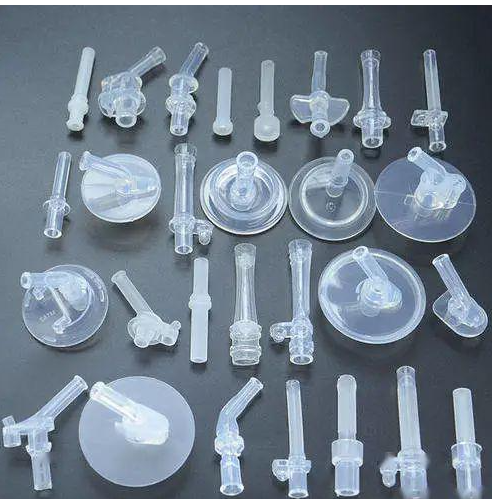

Silicone is a synthetic polymer derived from silicon metal, which is the second most abundant element on Earth. Silicone is produced by reacting silicon metal with methyl chloride to form a mixture of chlorosilanes, which are then hydrolyzed and polymerized to form various types of silicone products. Silicone has many unique properties that make it ideal for health care applications, such as:
These properties enable silicone to enhance the performance, durability, and safety of many health care products and devices. In this blog post, we will explore some of the amazing uses of silicone in the health care industry.
Every year, millions of people go through surgical procedures involving implantable devices. Medical implants and prosthetics are foundational to modern health care, making a positive impact on patient lives. Depending on the application they are used for, implants can remain in or on the body for short or long durations. To this end, there are key material considerations for implantables like stability, durability, and biocompatibility which are being proven by medical-grade silicones. The product has long been a material of choice for implants given its range of potential benefits and applications in pacemakers, breast implants, and more.
Some examples of silicone implants are:
Nearly 5% of the global adult population had been diagnosed with chronic bronchitis, COPD, or emphysema in 2020. About 152, 657 mortalities were registered in 2020 due to chronic lower respiratory diseases.
To tackle the distress caused by respiratory diseases, the procurement of durable masks and respiratory devices that can sustain multiple cleaning cycles has become indispensable. In this regard, silicone has emerged as a viable material for its thermal stability and excellent tear resistance. During the coronavirus pandemic, silicone masks also came out as an alternative to N95 respirators given the burgeoning waste and ensuring prolonged safety for health care workers. A testament of the same was offered by researchers from the Massachusetts Institute of Technology. In collaboration with the Brigham and Women’s Hospital in Boston, the team developed a new silicone mask that could be safely reused without the fear of contamination.
Some examples of silicone respiratory devices are:
The emerging trends toward remote patient monitoring to anticipate health issues and allow return-to-home care with confidence and prevent rehospitalization have positively fueled the demands for wearable and connected medical devices that patients can wear discreetly and securely for a couple of weeks, as well as easily change or reposition when required. Again, silicone technology is well-positioned to provide suitable adhesive solutions by building on its recognized suitability in well-established medical applications and extending its performance to answer the new challenges rising from the development of advanced e-health systems.
Some examples of silicone wearable and connected devices are:
Silicone is a remarkable material that has many applications in the health care industry. Silicone can improve the quality of life and health outcomes of patients by providing reliable, comfortable, and safe products and devices. Silicone can also enable the development of innovative and advanced solutions for health care challenges, such as chronic diseases, pandemics, and aging. Silicone is truly a wonder material that deserves our appreciation and admiration.
If you are interested in customizing silicone products for your health care needs, you can contact us at [GET A QUOTE]. We are a professional silicone product manufacturer with experience in the health care industry and ISO 13485 certification. We have developed medical silicone tubing, silicone breathing valves, and other products for our customers. We can provide you with high-quality silicone products that meet your specifications and requirements.Help you create the best silicone solution for your application.
To learn more about our products and services, please visit our website or send us an email. We would love to hear from you and answer any questions you may have. Thank you for reading our blog post and we hope to hear from you soon.
DX provides you with all-around silicone product customization services for valued customers like you.